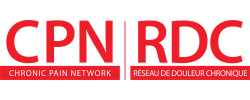| Return |
Patient Evidence Summary

Doctor, I have subacromial pain. Will specific (targeted) exercises help me?
Specific exercise is a good first-line therapy for subacromial pain (shoulder pain). These exercises may make it less likely that you will need surgery for your pain.
What is the evidence?
Researchers looked at patients with subacromial pain who received specific exercises and compared them to patients with subacromial pain who received non-specific exercises. They measured patients right after treatment (at 12 weeks), at 1 year, and again at 5 years after treatment. They measured patients’ pain, shoulder disability, and whether they eventually got surgery. They found that:
- After treatment (12 weeks) patients who had specific exercises had less shoulder pain and better function than patients who had nonspecific exercises
- After treatment, fewer patients in the specific exercise group chose to have surgery (20%) compared with those in the nonspecific exercise group (63%)
- Shoulder pain and function improved in both groups over 5 years
- After 5 years, 70% of patients in the specific exercise group were satisfied with their treatment and did not have surgery compared with 36% of patients in the unspecific exercise group
- In both groups, patients who had not had surgery had less pain and better function than patients who had surgery
What kind of study was this?
This was a randomized controlled trial (RCT). In an RCT, patients are randomly assigned to receive the treatment under study or a comparator treatment.
Who participated in the study?
This study included 91 people who had subacromial pain and were on the waiting list for arthroscopic subacromial decompression surgery (ASD), and who were reassessed 1 and 5 years after their exercise intervention.
How was the study done?
The study compared specific exercises with non-specific exercises for subacromial pain.
Specific exercises | vs | Non-specific exercises |
|---|---|---|
These exercises focused on strengthening eccentric exercises for the rotator cuff and strengthening concentric/eccentric exercises for the scapula stabilizers. Each exercise was repeated 15 times in three sets twice daily for 8 weeks. The exercises were adjusted for each individual and patients progressed with increased loads (weights and/or elastic bands). Patients received a subacromial steroid injection at their first visit. | Patients in this group did six non-specific movement exercises for the neck and shoulder without any load (weights or elastics). Each exercise was repeated 10 times, twice a day. Patients did the same program without any progression for the whole treatment period. Patients received a subacromial steroid injection at the first visit. |
Why was this research done?
Subacromial impingement syndrome is a complex disease with multiple causes. Conservative treatment (steroid injections and/or physiotherapy) is the first choice of treatment, but up to 30% of all people with subacromial impingement syndrome end up needing surgery. Some studies have shown that patients who only have exercise do just as well as patients who have surgery. It is hard to know who will do well on exercise, and which exercises are best.
This Evidence Summary is based on the following article:
Bjornsson Hallgren HC, Adolfsson LE, Johansson K, et al. Specific exercises for subacromial pain. Acta Orthop. 2017 Dec;88(6):600-605. doi: 10.1080/17453674.2017.1364069. Epub 2017 Aug 16. PubMed
Holmgren, T, Bjornsson Hallgren H, Oberg B, et al. Effect of specific exercise strategy on need for sugery in patients with subacromial impingement syndrome: randomized controlled study. BMJ 2012;344:e787 doi: 10.1136/bmj.e787
Published: Friday, February 1, 2019
Please note that the information contained herein is not to be interpreted as an alternative to medical advice from a professional healthcare provider. If you have any questions about any medical matter, you should consult your professional healthcare providers, and should never delay seeking medical advice, disregard medical advice or discontinue medication based on information provided here.
|
This Evidence Summary was printed from the PAIN+ CPN website on 2025/04/01. To view other Evidence Summaries or to register to receive email notifications about new Evidence Summaries, please visit us at https://www.painpluscpn.ca/Articles/EvidenceSummaries |

|






 , McMaster University
, McMaster University